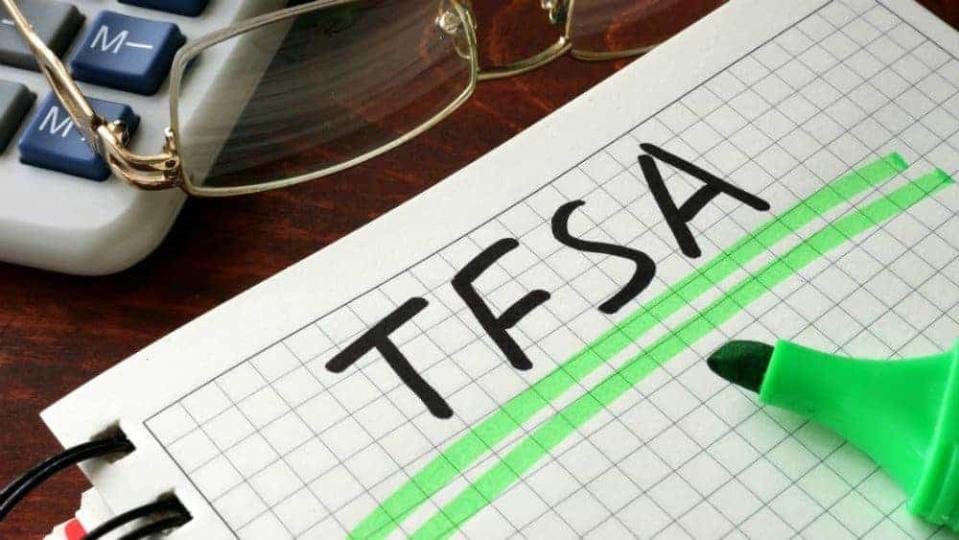How to Use a TFSA to Maximize Your Returns

The Tax-Free Savings Account (TFSA) is a wonderful tool for investors of any age (specifically 18 or older with a valid social insurance number) to use to protect their investments against tax collection from the Canada Revenue Agency. If you have never contributed to a TFSA, you could have as much as $63,500 contribution room this year! Based on a 7% rate of return, your investment can double in a little over 10 years and triple in less than 17 years.
The compounding effect makes your investments grow faster the longer your money stays invested, which is why it takes less time to triple than double your investment. So, generally, you want to invest your savings as soon as possible. Here’s how you can maximize your returns with the help of your TFSA.
How to use a TFSA to maximize your returns
Many investors have fixed-income investments, such as bonds or GICs as a part of their diversified portfolio. These investments generate interests. As interests are taxed at a high tax rate, some investors automatically choose to hold bonds or GICs in tax-sheltered accounts such as TFSAs.
If you live in Ontario and you’re in the third tax bracket, earning $47,630-77,313 this year, the tax rates for the interests, capital gains, and eligible Canadian dividends you’ll earn can be as high as 29.65%, 14.83%, and 6.39%, respectively.
If you earn $2,500 of interests on the $63,500, you’d be paying $741.25 of taxes if the amount was invested outside of tax-sheltered accounts. On the other hand, if you book 7% of capital gains and receive 3% of dividends from investing in stocks with the $63,500, you’d be paying nearly $780.92 of taxes.
Ultimately, your decision on what to invest in your TFSA should depend on your investment strategy (e.g., allocation to bonds and stocks), followed by the amount of taxes you’ll save by investing in one type of investment over another. As illustrated above, from a purely returns perspective, there’s no reason not to own quality dividend stocks, which tend to outperform long-term bond returns in your TFSA.
A proven dividend stock that’s priced at a discount
Bank of Nova Scotia (TSX:BNS)(NYSE:BNS) has been positioning itself for growth. It made a number of acquisitions last year, including in Canada, Colombia, and Chile, which could be slightly dilutive in the near term, but should lead to higher growth in the future.
Moreover, it continues to invest in technology, such as automation, machine learning, and artificial intelligence with the goal of reducing costs, enhancing productivity, and reducing error rates. The returns of technological investments are difficult to gauge, but nonetheless, the spending should help expand margins and grow earnings.
BNS data by YCharts. Bank of Nova Scotia stock outperformed the market in total returns and income in the long run.
Currently, at $74 and change per share, Bank of Nova Scotia still trades at a decent discount of about 15% from its normal multiple. And over the next two years, it could appreciate as much as 28%. Irrespective of its valuation, combining the international bank’s stable earnings growth of about 6% and dividend yield of about 4.6%, the bank should still be able to deliver long-term returns of more than 10% from current levels.
Investor takeaway
First, decide on an investment strategy (e.g.,) allocation to bonds and stocks) that works for you, and then estimate how much taxes you’ll save by investing each in your TFSA. Historically, quality dividend stocks have outperformed other investments over the long term. Therefore, investors should seriously consider buying stocks like Bank of Nova Scotia, especially on dips, for their TFSAs. This will lead to decades of tax-free returns and dividend income!
More reading
Fool contributor Kay Ng owns shares of The Bank of Nova Scotia. Bank of Nova Scotia is a recommendation of Stock Advisor Canada.
The Motley Fool’s purpose is to help the world invest, better. Click here now for your free subscription to Take Stock, The Motley Fool Canada’s free investing newsletter. Packed with stock ideas and investing advice, it is essential reading for anyone looking to build and grow their wealth in the years ahead. Motley Fool Canada 2019

 Yahoo Finance
Yahoo Finance 